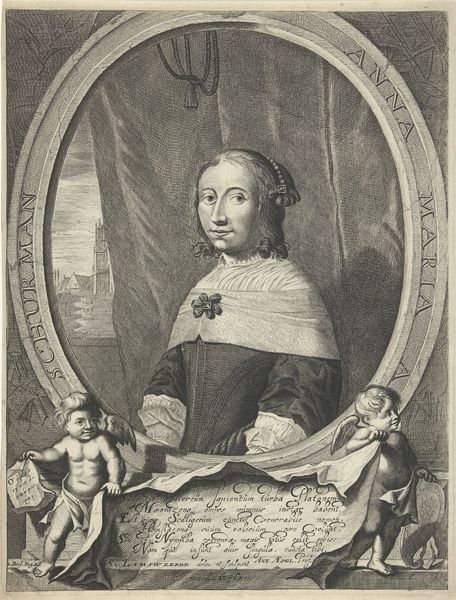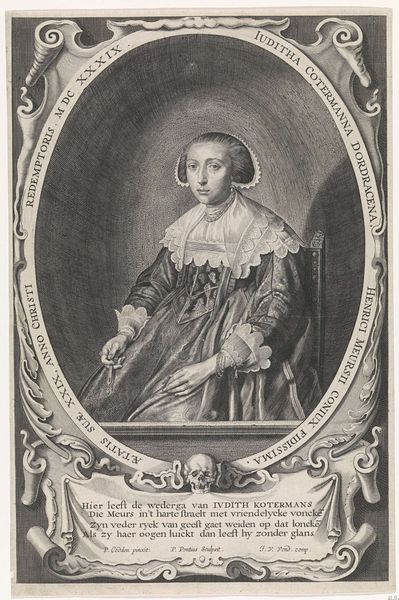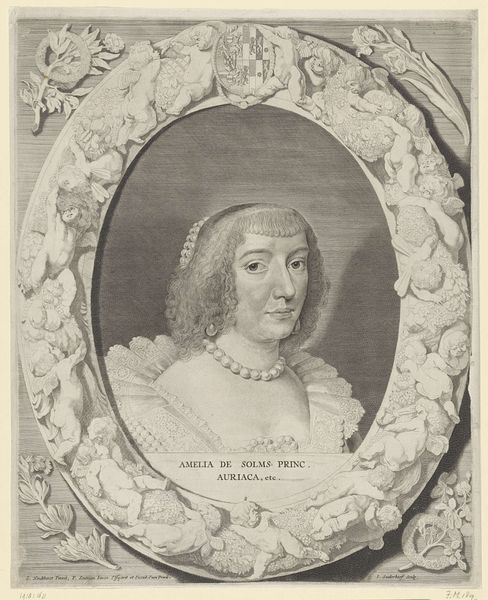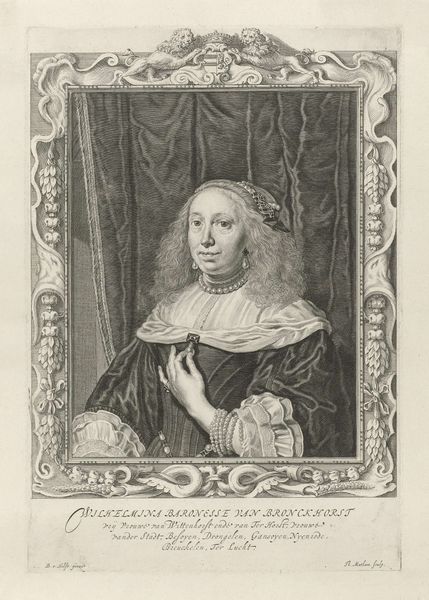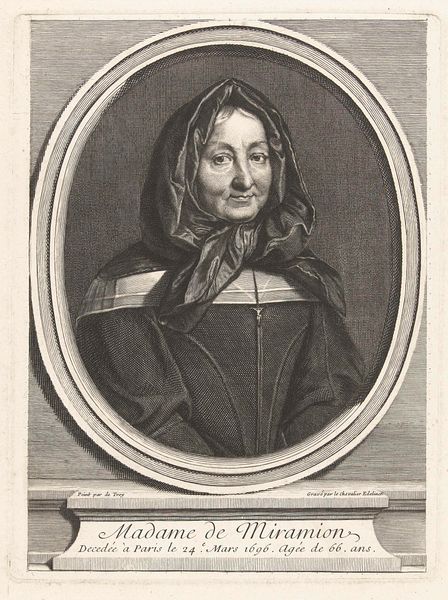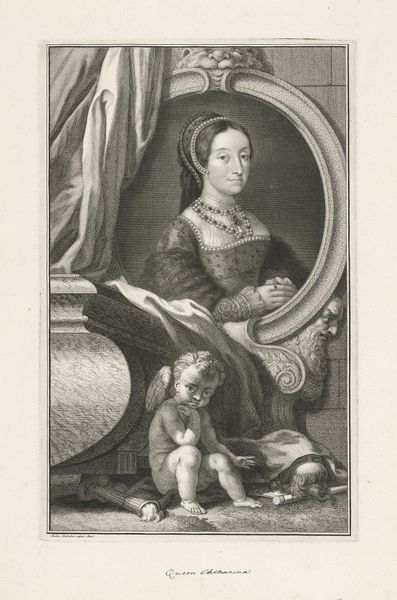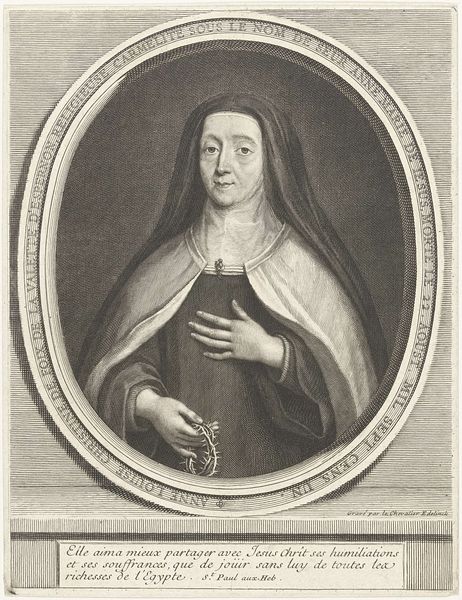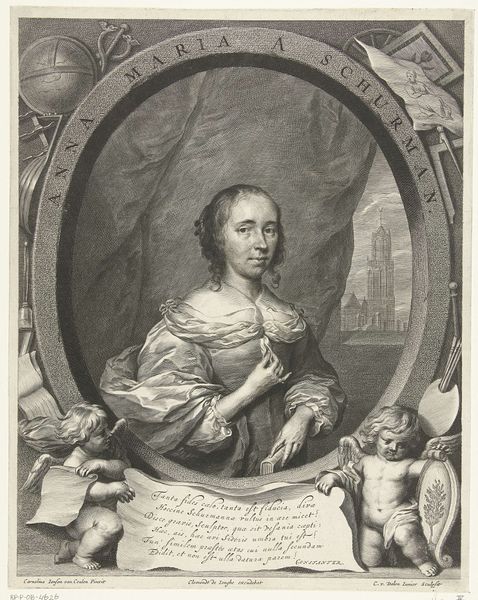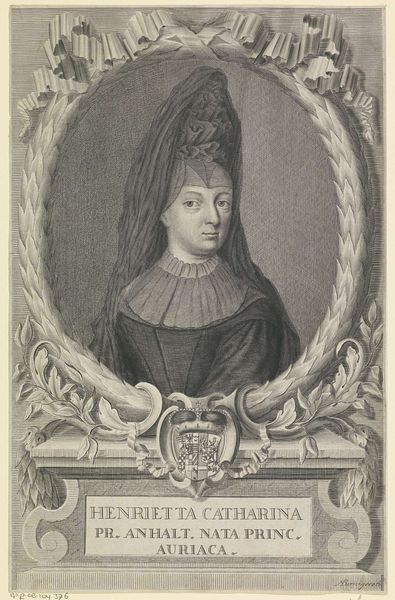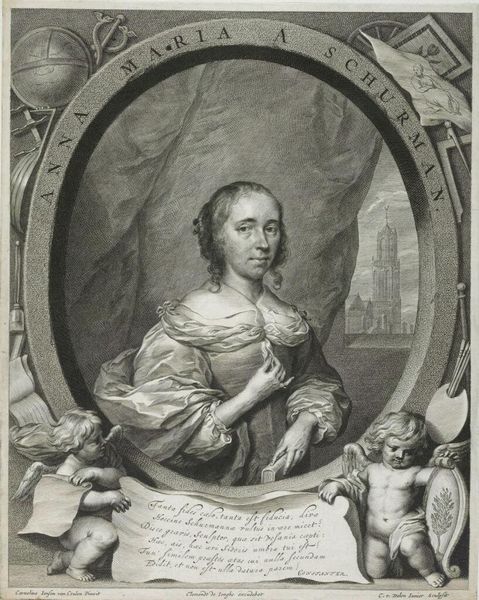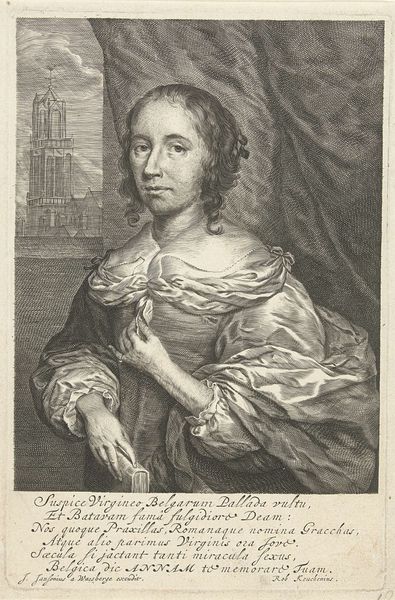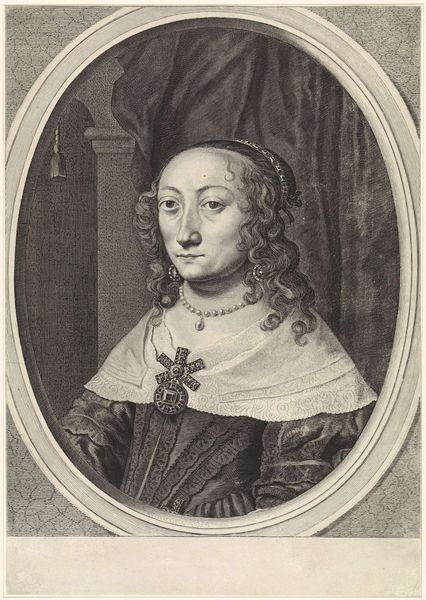
engraving
#
portrait
#
baroque
#
dutch-golden-age
#
old engraving style
#
history-painting
#
engraving
Dimensions: height 300 mm, width 227 mm
Copyright: Rijks Museum: Open Domain
Curator: This engraving from 1657 portrays Anna Maria van Schurman. Steven van Lamsweerde masterfully captures her image within the distinct visual language of the Dutch Golden Age. What stands out to you initially? Editor: Immediately, it's the almost severe expression on her face combined with the cherubic figures flanking the text at the bottom—a fascinating juxtaposition of intellectualism and classic artistic tropes. There's a clear tension. Curator: Precisely. Schurman was a remarkable figure, celebrated for her intellect and artistic abilities in a time when such achievements for women were rare and often contested. This engraving functions as a sort of visual biography. Editor: And the background is significant too, isn’t it? Is that a cityscape visible through the curtain, or some symbol of learning? Curator: It does appear to be a cityscape, possibly referencing her scholarly home, offering a peek into her world beyond the immediate portrait. Lamsweerde was consciously constructing Schurman's public persona through symbolic associations. Notice also that oval frame and elaborate text inscription. It mimics classic Renaissance portraiture, imbuing her image with intellectual authority. Editor: It makes me consider how even seemingly straightforward portraiture participates in power dynamics. Representing a learned woman in this era wasn’t just about capturing her likeness; it was about asserting her position in a patriarchal society, constructing an image that challenges conventional notions of gender and intellectual pursuits. The very act of engraving and distributing her image makes her accessible. Curator: The engraving, as a medium, was critical. Reproducible images could circulate amongst a broader public, influencing perceptions and establishing historical narratives. Lamsweerde understood this; his strategic deployment of recognizable tropes elevated her status in a tangible way. Editor: I wonder about the accessibility this image gave Schurman at the time, or intended to give her. Did the male gaze factor into the production of this engraving and subsequent views, and if so, to what degree? Curator: That's a vital question that contemporary scholars continue to explore, especially within feminist art history. These engravings contributed to shaping perceptions of women's roles in Dutch society. We see visual articulations of power, knowledge, and identity intertwining in complex ways. Editor: This has revealed interesting connections—Schurman’s unique historical context is revealed by this careful choice of technique, composition, and distribution in the visual field of 17th century Holland. Thank you for your expertise.
Comments
No comments
Be the first to comment and join the conversation on the ultimate creative platform.
